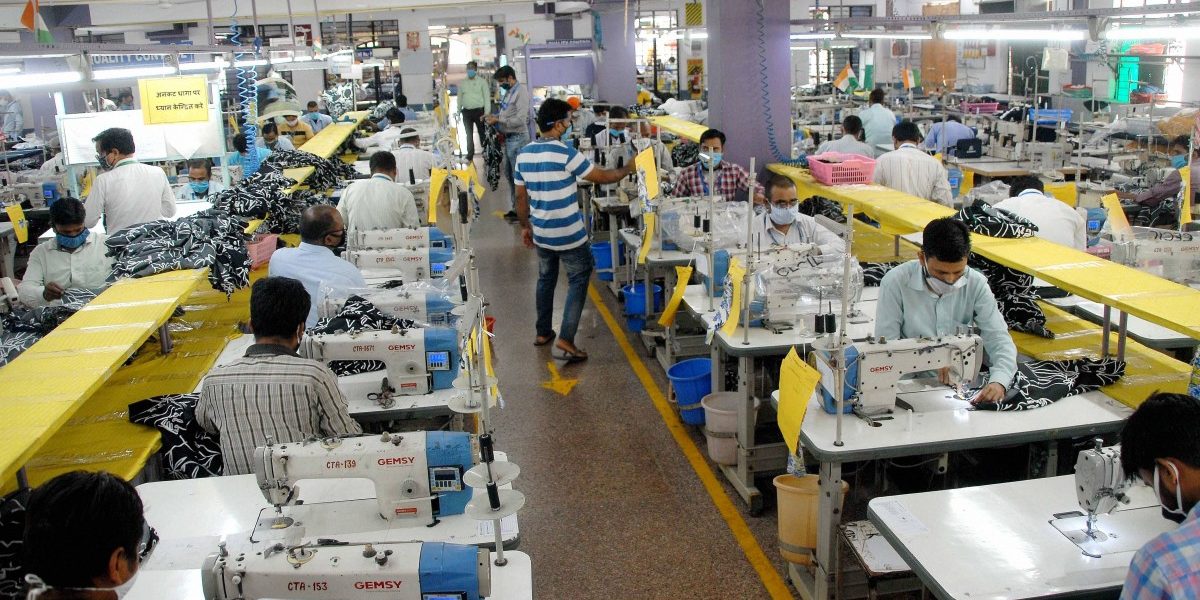hatehs
FULL MEMBER

- Joined
- Mar 10, 2023
- Messages
- 1,901
- Reaction score
- -2
- Country
- Location
India’s Economy 16.5 Years Behind China’s: Bernstein Research Report
India is behind China by 21 years in patent, 20 years in FDI, 19 years in forex reserves, and 17 years in exports. On nominal GDP and per capita income, India is 15 years behind. In consumption expenditure, it is 13 years behind.
India’s Economy 16.5 Years Behind China’s: Bernstein Research Report
Taniya Roy
New Delhi: India is a median 16.5 years behind China on broad business and economic parameters, according to latest research by brokerage firm Bernstein, Business Standard reported.
Bernstein measured the India-China gap by looking at various yardsticks that included patents, foreign direct investment (FDI), forex reserves, nominal gross domestic product (GDP) and exports.
When it comes to patents, the report found India is behind China by 21 years. In terms of FDI, India is 20 years behind China, 19 years in forex reserves, and 17 years in exports.
On nominal GDP and per capita income, India is 15 years behind. In consumption expenditure, it is 13 years behind. On gross fixed capital formation, it is 16 years behind.
Therefore, it has much catching up to do, the newspaper cited the report as saying.
Bernstein’s analysis is based on data from the Reserve Bank of India (RBI), the China’s National Bureau of Statistics, the Ministry of Statistics and Programme Implementation, the World Bank and the World Intellectual Property Organization.
China being ahead of India in these parameters is understandable given that, a decade ago, India’s GDP was only the 11th largest in the world, the newspaper reported.
But in recent years, India became the fifth largest economy.
Last year, India’s GDP of $3.53 trillion pushed ahead of the UK’s $3.38 trillion, to become the fifth largest economy. These calculations were based on the numbers estimated by the International Monetary Fund.
However, the New Indian Express analysed the nominal GDP numbers, saying that “the trouble with GDP numbers is that they undergo a series of revisions and the final data comes only with a lag of two to three years. In other words, first estimates of national output are ballpark figures and are subjected to revisions, both upwards and downwards.”
It’s also important to note that nominal GDP of a country is expressed in terms of current year prices of goods and services, whereas real GDP is the inflation-adjusted GDP of a country.
Another piece in Deccan Herald, published in July, analysed the GDP growth, saying, “All high-income countries get into low GDP growth orbit thanks to having attained economic prosperity and falling population, whereas developing countries record higher GDP growth. Unsurprisingly, India, a poor developing country, despite not so impressive growth of about 7%, in current dollars during 2013-2022, moved past these four countries to become the fifth largest.”
However, India is far behind in terms of per capita income, the newspaper noted.
Can India reduce the gap with China?
India aims to hit $10 trillion by 2030, a target which experts say is very achievable. Business Standard said that India can leverage the slowing down of Chinese growth.
“Annual GDP growth was only 3% in 2022, compared to 8.4% in 2021, according to the World Bank. India is growing faster, at 7%, in 2022 and the expectation is that it will continue to grow at that level or higher,” said the business daily.
“The geopolitical tensions between the US and China have provided India with some new leverage – many global companies manufacturing in China are hedging their bets and India has managed to persuade the likes of Apple to shift manufacturing capacity to the country and also export a large part of its production,” it said.
According to Business Standard, India also has a growing young workforce with labour costs lower than China. But China’s productivity per labour is far higher.
In terms of manufacturing, India is heavily dependent on China for its raw material needs. And “China has become the manufacturing hub of the world because it is able to produce things at scale. And having produced things at scale it is able to sell them for cheap. By selling them for cheap, it is able to dominate,” Arun Kumar, retired professor of economics at the Jawaharlal Nehru University, had told The Wire in June.
Moreover, despite having a growing workforce, India doesn’t have enough quality jobs.
So, the population growth could become a liability for India if it doesn’t create enough jobs.

 thewire.in
thewire.in
India is behind China by 21 years in patent, 20 years in FDI, 19 years in forex reserves, and 17 years in exports. On nominal GDP and per capita income, India is 15 years behind. In consumption expenditure, it is 13 years behind.
India’s Economy 16.5 Years Behind China’s: Bernstein Research Report
Taniya Roy
New Delhi: India is a median 16.5 years behind China on broad business and economic parameters, according to latest research by brokerage firm Bernstein, Business Standard reported.
Bernstein measured the India-China gap by looking at various yardsticks that included patents, foreign direct investment (FDI), forex reserves, nominal gross domestic product (GDP) and exports.
When it comes to patents, the report found India is behind China by 21 years. In terms of FDI, India is 20 years behind China, 19 years in forex reserves, and 17 years in exports.
On nominal GDP and per capita income, India is 15 years behind. In consumption expenditure, it is 13 years behind. On gross fixed capital formation, it is 16 years behind.
Therefore, it has much catching up to do, the newspaper cited the report as saying.
Bernstein’s analysis is based on data from the Reserve Bank of India (RBI), the China’s National Bureau of Statistics, the Ministry of Statistics and Programme Implementation, the World Bank and the World Intellectual Property Organization.
China being ahead of India in these parameters is understandable given that, a decade ago, India’s GDP was only the 11th largest in the world, the newspaper reported.
But in recent years, India became the fifth largest economy.
Last year, India’s GDP of $3.53 trillion pushed ahead of the UK’s $3.38 trillion, to become the fifth largest economy. These calculations were based on the numbers estimated by the International Monetary Fund.
However, the New Indian Express analysed the nominal GDP numbers, saying that “the trouble with GDP numbers is that they undergo a series of revisions and the final data comes only with a lag of two to three years. In other words, first estimates of national output are ballpark figures and are subjected to revisions, both upwards and downwards.”
It’s also important to note that nominal GDP of a country is expressed in terms of current year prices of goods and services, whereas real GDP is the inflation-adjusted GDP of a country.
Another piece in Deccan Herald, published in July, analysed the GDP growth, saying, “All high-income countries get into low GDP growth orbit thanks to having attained economic prosperity and falling population, whereas developing countries record higher GDP growth. Unsurprisingly, India, a poor developing country, despite not so impressive growth of about 7%, in current dollars during 2013-2022, moved past these four countries to become the fifth largest.”
However, India is far behind in terms of per capita income, the newspaper noted.
Can India reduce the gap with China?
India aims to hit $10 trillion by 2030, a target which experts say is very achievable. Business Standard said that India can leverage the slowing down of Chinese growth.
“Annual GDP growth was only 3% in 2022, compared to 8.4% in 2021, according to the World Bank. India is growing faster, at 7%, in 2022 and the expectation is that it will continue to grow at that level or higher,” said the business daily.
“The geopolitical tensions between the US and China have provided India with some new leverage – many global companies manufacturing in China are hedging their bets and India has managed to persuade the likes of Apple to shift manufacturing capacity to the country and also export a large part of its production,” it said.
According to Business Standard, India also has a growing young workforce with labour costs lower than China. But China’s productivity per labour is far higher.
In terms of manufacturing, India is heavily dependent on China for its raw material needs. And “China has become the manufacturing hub of the world because it is able to produce things at scale. And having produced things at scale it is able to sell them for cheap. By selling them for cheap, it is able to dominate,” Arun Kumar, retired professor of economics at the Jawaharlal Nehru University, had told The Wire in June.
Moreover, despite having a growing workforce, India doesn’t have enough quality jobs.
So, the population growth could become a liability for India if it doesn’t create enough jobs.

India’s Economy 16.5 Years Behind China’s: Bernstein Research Report
India is behind China by 21 years in patent, 20 years in FDI, 19 years in forex reserves, and 17 years in exports. On nominal GDP and per capita income, India is 15 years behind. In consumption expenditure, it is 13 years behind.










